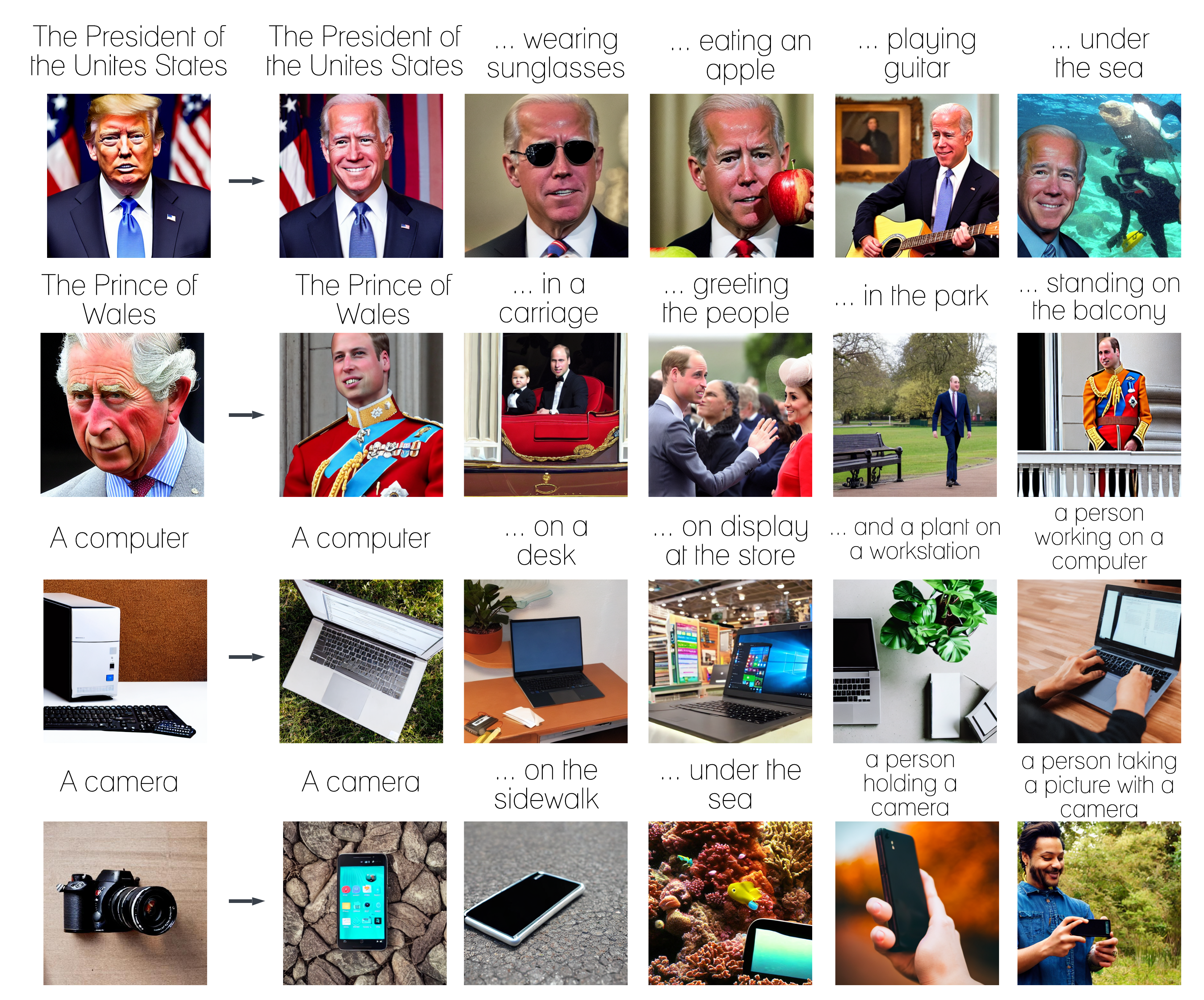Project website | Paper (Arxiv)
Text-to-image models are trained on extensive amounts of data, leading them to implicitly encode factual knowledge within their parameters. While some facts are useful, others may be incorrect or become outdated (e.g., the current President of the United States). We introduce ReFACT, a novel approach for editing factual knowledge in text-to-image generative models. ReFACT updates the weights of a specific layer in the text encoder, only modifying a tiny portion of the model’s parameters, and leaving the rest of the model unaffected. We empirically evaluate ReFACT on an existing benchmark, alongside RoAD, a newly curated dataset. ReFACT achieves superior performance in terms of generalization to related concepts while preserving unrelated concepts. Furthermore, ReFACT maintains image generation quality, making it a valuable tool for updating and correcting factual information in text-to-image models.
conda create -n refact python=3.9
conda activate refact
cd ReFACT
pip install -r requirement.txt
Best configuration on RoAD
python clip_edit.py --file <file_path> --model CompVis/stable-diffusion-v1-4 --dataset RoAD --data_split validation --algorithm contrastive_text --v_similarity_metric l2 --edit_layer 7 --v_lr 0.05 --v_max_grad_steps 100 --v_prob_threshold 0.99 --v_weight_decay 0.01 --use_negative_images --num_negative_images 20
Best configuration on TIME dataset
python clip_edit.py --file <file_path> --model CompVis/stable-diffusion-v1-4 --dataset RoAD --data_split validation --algorithm contrastive_text --v_similarity_metric l2 --edit_layer 9 --v_lr 0.05 --v_max_grad_steps 100 --v_prob_threshold 0.99 --v_weight_decay 0.01 --use_negative_images --num_negative_images 20

